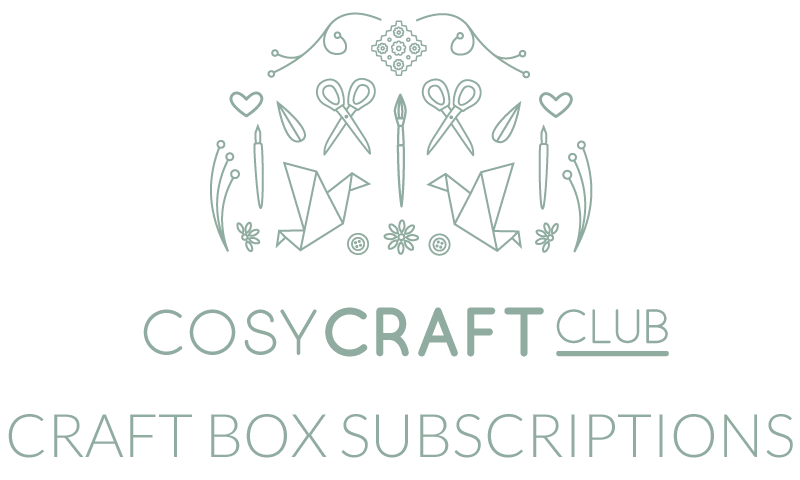My clay crafting process by Sophs Draws
Welcome to the Cosy Craft Club's air dry clay month! We really want to encourage you to have a go at working with clay, it’s so fun! You can find all our air dry clay posts in one place here.
One of the lovely things about Cosy Craft Club is that I come across all kinds of talented crafters. After contacting her to ask for a ‘top clay tip’ (see the results here), Sophie has very kindly written a blog post for us to give an insight into her air dry clay crafting process - and she has shared a lot of the things she’s learned about working with clay along the way. Enjoy!
Hello! My name is Sophie Cane, I am an Illustrator and Designer based in a rural village situated along the Nar Valley Way in Norfolk. I am also a master's student and the owner of Sophsdraws on Etsy, a shop selling handmade goods designed and made by me! I offer a range of gifts from clay jewellery and ornaments to original paintings.
I have been sculpting with a range of clays for the past six years now. During this time, I have tested and experimented with a variety of techniques to get the best end results within my project! Recently I have rediscovered my love for air dry clay, creating trinket style dishes and figurines of animals.
Like many, I find Pinterest and Instagram to be a great source of inspiration for making your very own clay creations. Being situated in the countryside, I have always enjoyed exploring nature from my own backyard. Whether that be taking my artistic studio companion Isla, my dog, for a walk and photographing what I see or sitting at the garden table on a lovely sunny day, sketching and creating with my two rescue pet ducks, Donald and Dusty. My daily lifestyle is clearly represented and shown throughout the work I produce.
Now it's time to talk air-dry clay! Keep reading to learn the techniques and materials I personally use to create the best results.
Air-dry clay is a brilliant medium to use, whether that be for a beginner or advanced sculptor. Throughout my experiences with air-dry clay, I have found the ‘Pebo Gedeo: Non-Firing Clay’ (I purchased mine from Hobbycraft) to be perfect for creating figurines. The texture of the clay is very close to that of kiln fired clay and once dried, leaves no cracks, (Drying time varies from 4-5 days).
When creating flat objects like tree decorations, trinket dishes or hanging objects, I find it sufficient to sketch out my design in rough to the size I would like on card (ideally an empty cereal box). Then I cut this out with scissors so that I have the perfect sized template for my project. Next, I will carefully roll out my clay, i like to use either a smooth glass or plastic rolling pin. I have a tile I brought from my local hardware store from the tester section for 79p! I find ceramic tiles great for rolling clay, as the glazed finish and flat surface ensures the clay will not stick and has a smooth finish, also they are very easy to wipe clean! I like to roll my clay to around the thickness of a pound coin, thicker is fine (you really don’t want to roll any thinner as this could encourage cracking or breakage as it is extremely fragile when thin). Finally, I place the template on top of the rolled-out clay and cut the shape out from the clay with a scalpel, smoothing down the edges with a little water on my index finger.
For figurines, the more you create from a single block of clay, the less likely it is for pieces not to stick. For limbs and smaller sections, I like to have a wire armature underneath the clay, so that when I smooth the joints together with a little water and more clay, I am confident the pieces have merged.
Clay tools are easily purchased from most local craft stores or online retailers such as Amazon and eBay for as little as £2.00. These are especially useful for attaching clay to clay and carving out facial features. A spray bottle is also a good tool to have, to keep the clay wet and control the amount of water you are adding at any specific time. You need to ensure you keep the piece you are working on pliable with water as otherwise the clay may start to dry and create a skin, making it difficult to add more clay.
Once dry, I like to use extra fine sanding paper just to smooth out any rough patches of clay before I paint my designs. When using acrylic paint to decorate, I prefer to use the primary colours and mix accordingly. This keeps the costs of paints down and allows you to understand colour ranges and pallettes easily! Afterwards, I seal my designs with a clay glaze, which ensures the colours pop and protects the designs.
Once done with a project, I like to wrap my remaining clay in a piece of old cotton rag (from an old bedsheet is perfect) which has been dampened with cold water and then placed into an airtight container. This will then ensure the clay will keep until your next creative surge!
Thank you so much Sophie! I learned so much here, and I hope you did too. Please check out Sophie’s Etsy shop and Instagram feed to see more of her lovely work.
Rachel x
Cosy Craft Club is a craft box subscription - receive a beautiful kit to try a different craft every month! All our kits are suitable for beginners and contain everything you need to sit down and get crafting. Our kits are also available to purchase individually (subject to availability).














